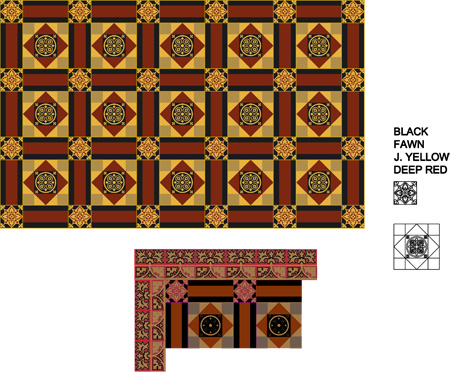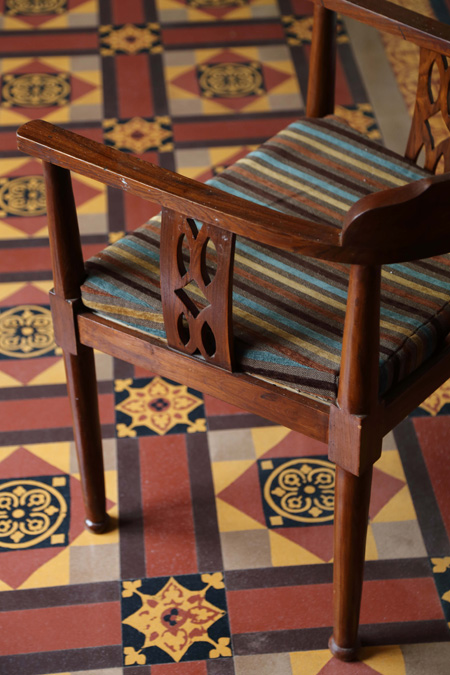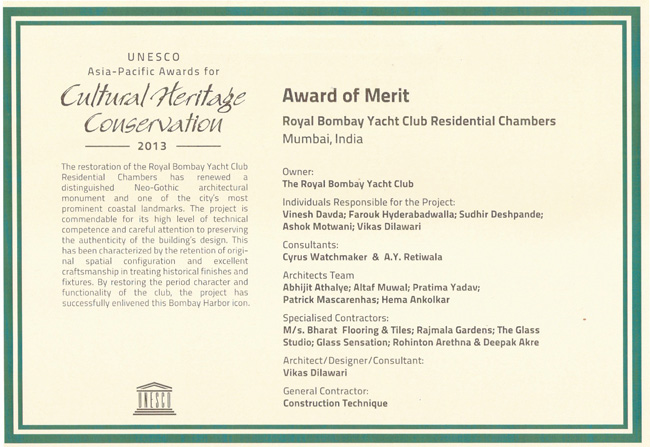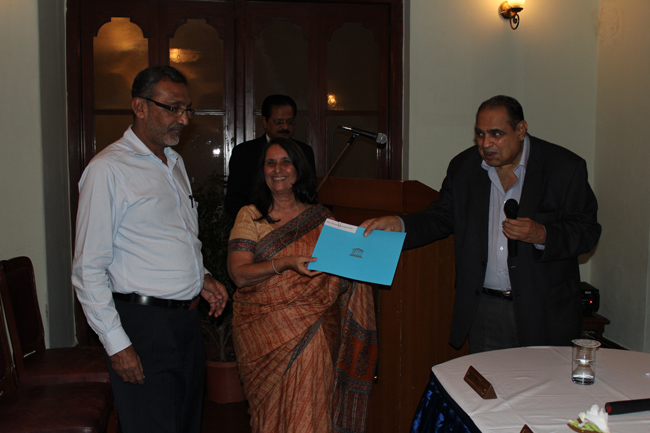100 Years
100 Stories

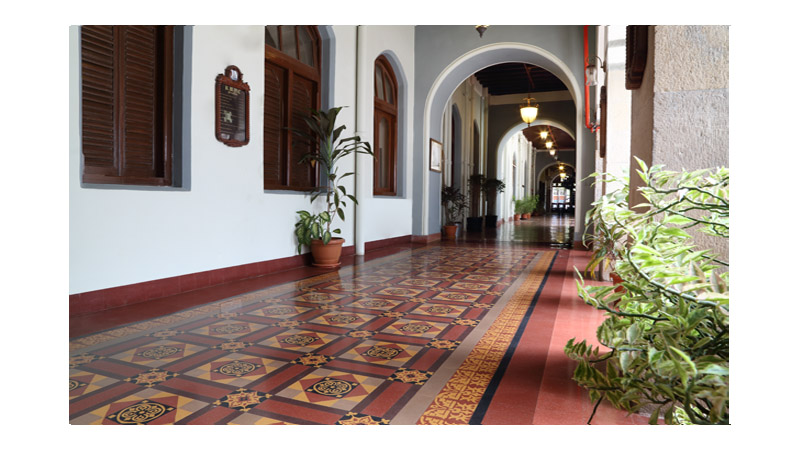
A custom-designed Heritage™ carpet welcomes visitors to the Royal Bombay Yacht Club. Winner of the UNESCO Cultural Heritage Conservation Award for 2013. Architect Vikas Dilawari. Courtesy BFT Archives
When the grand old Indo-Gothic architectural building of Mumbai, the Royal Bombay Yacht Club in Colaba, was restored with the guests still in residence, there was much jubilation. Even more so when it made the honours list in 2013 of the prestigious annual UNESCO Asia -Pacific Awards for Cultural Heritage Conservation.
Crumbling Edifice
Founded in 1846 with Henry Moland as the club commodore and later renamed on the recommendation of Sir Philip Edmond Wodehouse and under the patronage of Queen Victoria, the Royal Bombay Yacht Club remains to date one of the premier gentlemen’s clubs established in Mumbai. In 1896, the residential chambers, designed by John Adams and supervised by F.E Stevens, were built to accommodate members and visiting associates. However, over the years, the building fell into disrepair with the innards of the structure gradually falling apart. Journalist and blogger Sandip Ghose writes “The residential floors seemed haunted at night, with cats running amok, and the rooms were depressing”. After more than a century of use, the beautifully patterned floor had lost much of its charm with many of the original Minton tiles getting vandalised or damaged. They were expensive to import - so in the case of reconstruction, the original tiles were removed and replaced with another set of tiles.
A Step-Up
In 2012, an ambitious project was undertaken to carefully restore the age-old heritage building. Helmed by Conservation Architect Vikas Dilawari, it took a period of 3 years to bring the structure to its original glory. Bharat Floorings & Tiles, a legacy company which has played an integral role in the restoration of some of the key heritage establishments in the city, took up the challenging role of creating custom-made tiles to restore the flooring of the residential building. A sensitive restoration, the project was commended for “its high level of technical competence and careful attention to preserving the authenticity of the building’s design”
To be considered for the UNESCO Asia- Pacific Heritage Award required a strict following of the objectives and the eligibility procedure. The three primary criteria as mentioned in the UNESCO Cultural Conservation Award document are: understanding the place, technical achievement, and social and policy impact. It identifies and showcases the best practices in built heritage conservation and restoring properties in the region by private sector parties and public-private partnership. Let's take a brief look at the process that went behind restoring the oft-ignored part of the heritage buildings - the floors - that played a part in R.B.Y.C clinching the Award of Merit .
Meticulous Work
Recreating heritage tiles is quite a tricky process. After much research, Architect Vikas Dilawari wanted tiles to be as similar to the original design to retain the historicity of the building. After all, one of the criteria for qualifying for a UNESCO Award nomination is “how well the conservation/restoration work interprets the property’s cultural, social, historical and architectural significance.”
But it is difficult to construct small pieces in the exact same colour as the originals. The old sizes are too small - only two inches and it is not possible to create such small tiles. Faiyaz Mukhtiar, CEO of BFT reveals that Bharat did not have the designs and had to develop the stencils. He shares that “The whole floor consists of three–four tiles together that become one set and that is repeated”. Dilawari was very particular about it: “Aise hi chahiye, change karo, colour nahi aa raha hai.” (This is how it should be, change it, the colour isn’t coming)
Bharat had to create new stencils and colour schemes to achieve the desired look because the floors combine six different patterns rather than the typical two or three elements found in heritage floors. According to Bhakti Varekar, the designer who crafted the flooring for RBYC, “The club had original Minton tiles which were at least a hundred years old. The tiles had small cuttings, which formed a pattern with small inserts. In the beginning, we took photos and data from the old site. We needed to fit these small tiles figuratively into a Bharat tile which is bigger. In total, we needed 6 tiles to make one pattern”. To match the old flooring, BFT created a 30×30 main tile and 15×15 border tiles - bigger than the original Minton tile. Because it was impossible to make cement tiles in such a small size, they recreated the designs in different sizes. This was done to ensure that the fitting was geometric and that the joints matched. Over several months, prototypes were developed until the floor was a near-exact reproduction of the original Minton floor. According to Architect Vikas Dilawari said, “We copied it and made special moulds and when you do such kind of work it elevates the benchmark”. The project by paying attention to the minutest detail had met the criteria which involved “the use and quality control of appropriate building, artisan and conservation techniques.”
Overall, the restoration of the RBYC clubhouse flooring by Vikas Dilawari and BFT was a painstaking process that involved careful planning, attention to detail, and a deep respect for the building's historical and cultural significance. The end result was a restored clubhouse that retained its original character and charm, while also meeting the functional needs of the club members. Today it enjoys a 1400 member patronage, making it super exclusive, an F&B revamp, and stately rooms restored with modern facilities.
All in all, for Bharat, this was the one restoration project they relished every step of the way.
You may also like
-
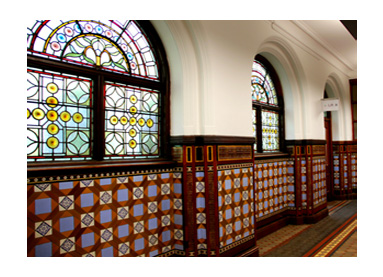 60DadoExplore the journey of dado tiles, from their functional origins to their trendy resurgence, adding character and charm to modern spaces. Discover Bharat's innovative designs that are making dado tiles a hot trend once again!Read More
60DadoExplore the journey of dado tiles, from their functional origins to their trendy resurgence, adding character and charm to modern spaces. Discover Bharat's innovative designs that are making dado tiles a hot trend once again!Read More -
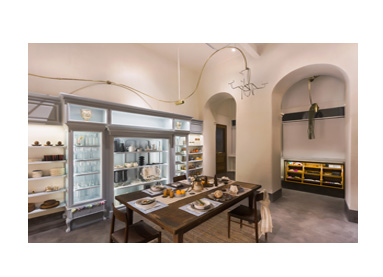 61MicrocementThinking about getting a microcement floor? Read this piece. If not, read it to know why you should get one.Read More
61MicrocementThinking about getting a microcement floor? Read this piece. If not, read it to know why you should get one.Read More -
 62BFT+A daring leap of faith by Firdaus gave Bharat its first designer tiles. This is the story of the BFT+ tile range.Read More
62BFT+A daring leap of faith by Firdaus gave Bharat its first designer tiles. This is the story of the BFT+ tile range.Read More


